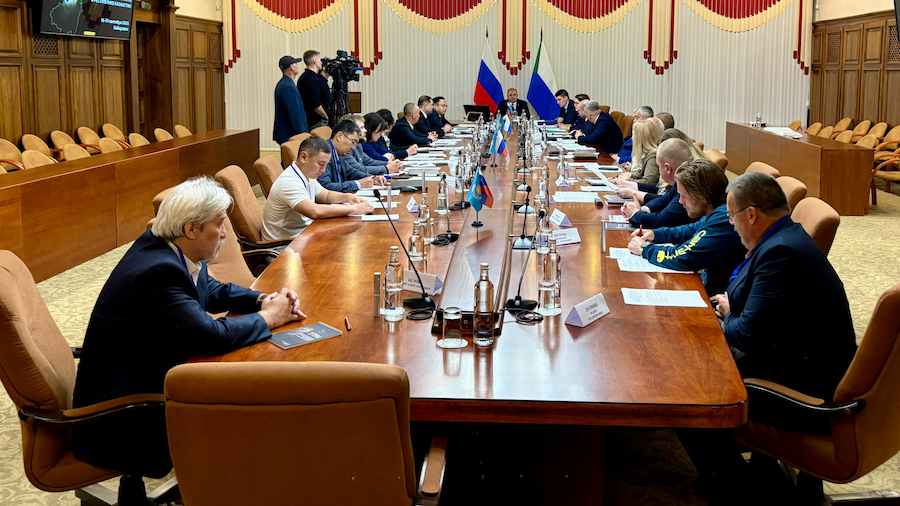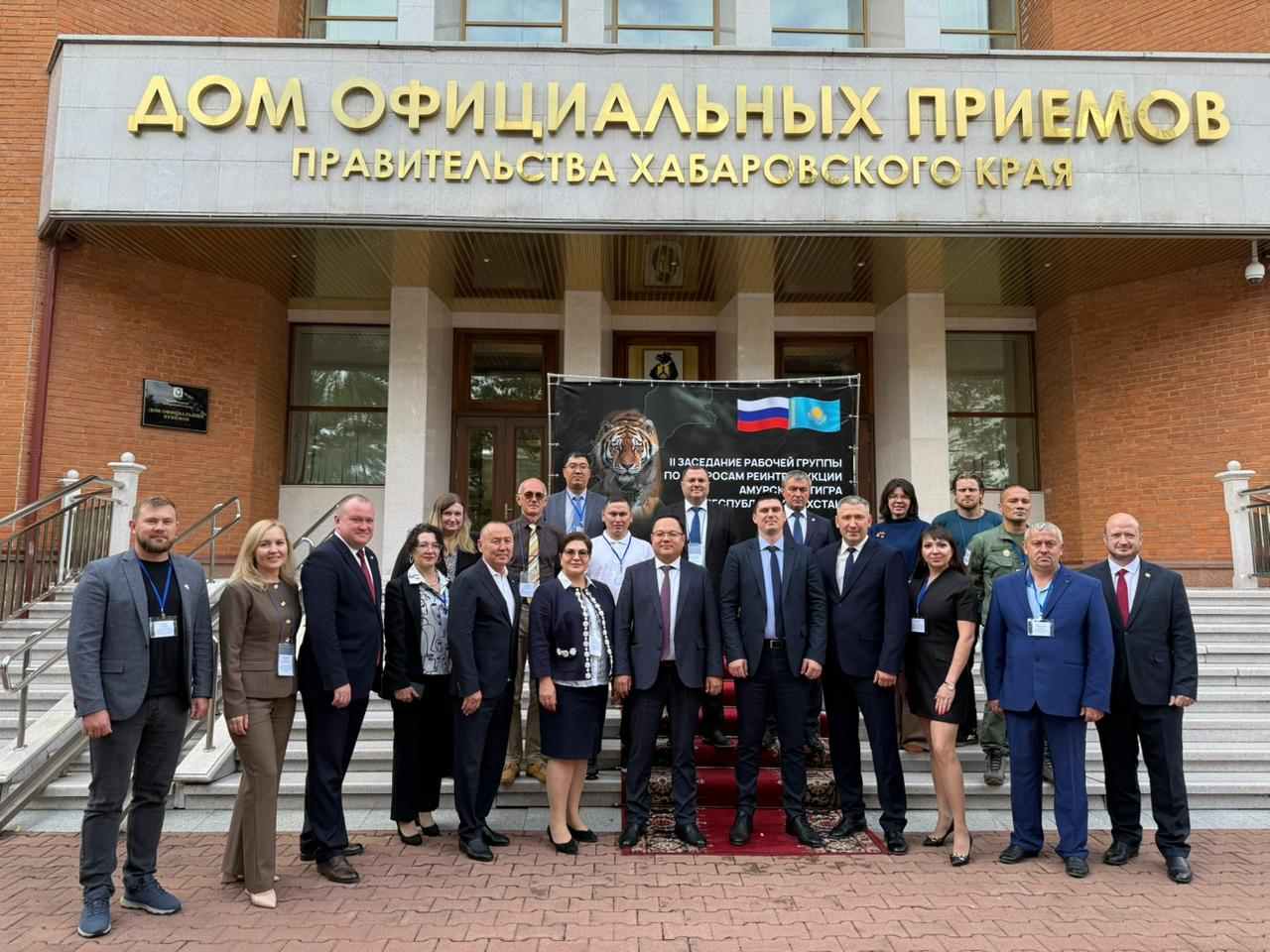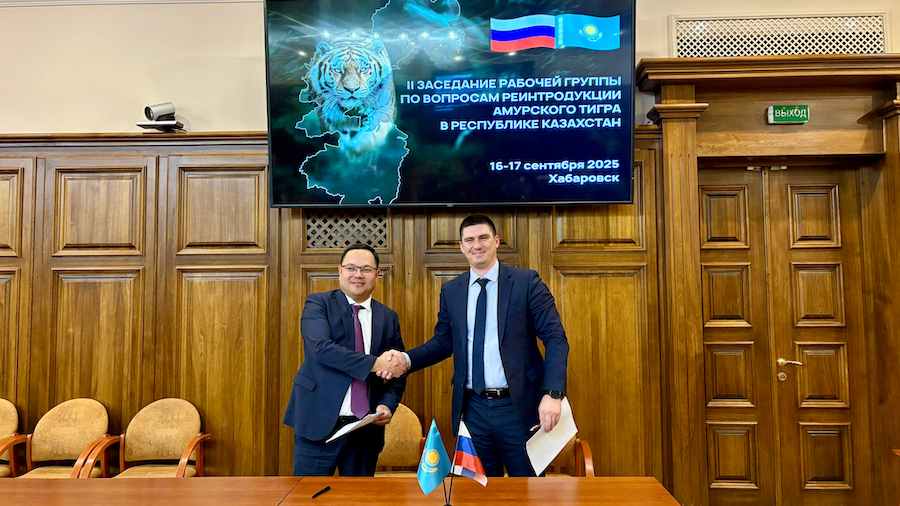This event marked an important stage in the development of strategic partnership between the Republic of Kazakhstan and the Russian Federation in the field of environmental protection and biodiversity conservation.

The Kazakhstani delegation included staff of the Institute of Zoology: Deputy Director General for Science M.A. Chirikova; Head of the Laboratory of Theriology A.A. Grachev; and Researcher of the Laboratory of Theriology E.R. Baydavletov.

During the meeting, representatives of Kazakhstan and Russia discussed key issues in preparing for the return of the tiger to Kazakhstan’s ecosystems. The extensive preparatory work carried out by specialists from both countries, including assessment of habitats suitable for tiger reintroduction, showed that Kazakhstan is ready to receive the first tigers from Russia. As a result of the meeting, the working group approved a draft Joint Two-Year Plan for preparing the import of tigers to Kazakhstan and their initial adaptation.

In addition, in the near future, Kazakhstani specialists will undergo training at the Amur Tiger Center. Russian colleagues have accumulated extensive experience in conserving and restoring the Amur tiger population and resolving conflict situations, which they are ready to share. The training program will include methods of observation, monitoring, capture, immobilization of animals, and conducting veterinary examinations.
The parties agreed to continue cooperation on the development of a scientific and technical program and a comprehensive assessment of habitats in an additional area in the Ili River delta. Joint work will also continue on the accounting and monitoring of ungulates in South Pribalkhash, where a forage base is successfully being formed within the Ile-Balkhash Reserve.
As part of the business program, meeting participants visited habitats of the Amur tiger in Khabarovsk Krai. Kazakhstani specialists were able to familiarize themselves on site with the practical experience of their Russian colleagues in resolving human–predator conflict situations. In addition, Russian experts shared their expertise in monitoring predators in the wild, safe capture and transportation of animals, adaptation of tigers to new habitats, and more.
The reintroduction of the tiger is regarded not only as an important environmental initiative but also as an example of a responsible approach to restoring the natural balance, as well as a symbol of cooperation between the two countries in protecting rare species.
26.09.2025
Sources of information: CFWC MNER RK, Amur Tiger Center
